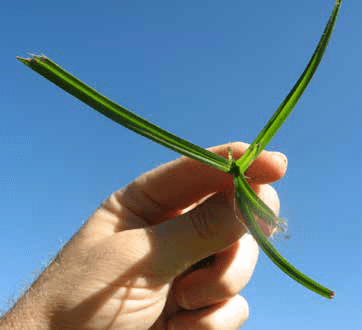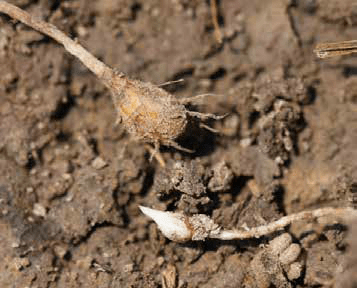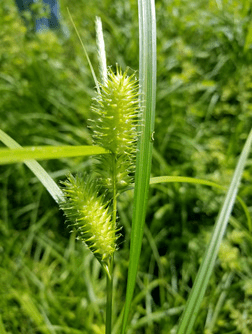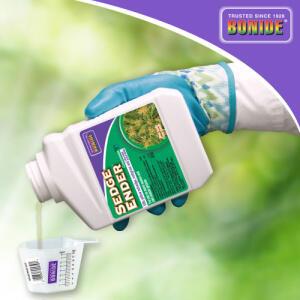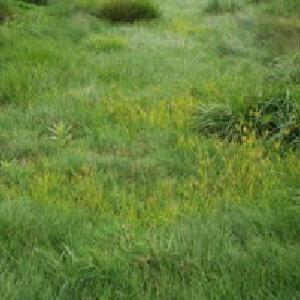Control with Herbicides
Herbicides may be required when large patches of nutsedge are present in the turf. The traditional herbicides used to control dandelions and crabgrass are ineffective since yellow nutsedge is a sedge and not a broadleaf or grass. Herbicides that contain halosulfuron or sulfentrazone are recommended for yellow nutsedge control. Of the two ingredients, sulfentrazone will provide the quickest control. Injury symptoms appear on yellow nutsedge within a few days after a sulfentrazone application. Injury symptoms appear on yellow sedge about two weeks after a halosulfuron application.
Regardless of herbicide selection, yellow nutsedge is a difficult-to-control weed that may require multiple herbicide applications. Follow label directions about when to make follow-up applications, if needed.
Late spring/early summer (when it is young and actively growing) is the ideal time to control yellow nutsedge. During its early stages, yellow nutsedge has not started producing tubers and is most susceptible to control with herbicides. As the summer progresses, nutsedge plants form seedheads and tubers. Since the tubers are the plants’ primary survival structure, it is critical to control nutsedge early in the summer before it produces tubers.
Be patient. Two to three years of control using herbicides will be needed to reduce viable tubers by about 90%. Herbicide applications will injure growing yellow nutsedge plants and help prevent more tubers from forming, but herbicide applications will not control tubers that are viable in the soil but have not yet produced plants.
Before using any herbicide, always refer to the label for specific instructions about proper use and turfgrass tolerance.
Consider the following steps for successful yellow nutsedge control:
- Read and follow all directions on the herbicide label.
- Do not mow one or two days prior to or following the herbicide application.
- Treat the area with the proper rate of herbicide and volume of water listed on the product label. Do not apply the herbicide if the turf is stressed due to drought or high temperatures.(≥90°F).
- Six to ten weeks after the first application, repeat steps 2 and 3 if the yellow nutsedge has recovered or regrown from tubers.
Summary
In summary, sedges are problem weeds and are difficult to control with nonchemical options. Many herbicides are available for sedge control but proper herbicide use and application timing is critical to optimize control.
For best results, apply herbicides prior to tuber production. The most common mistake is to apply herbicides too late in the season after yellow nutsedge is big, spreading by rhizomes, and producing tubers. To be effective, you will need to implement a sedge control program early in the season and continue it for more than a year to reduce tuber populations in the soil and prevent the spread of this problematic weed.


